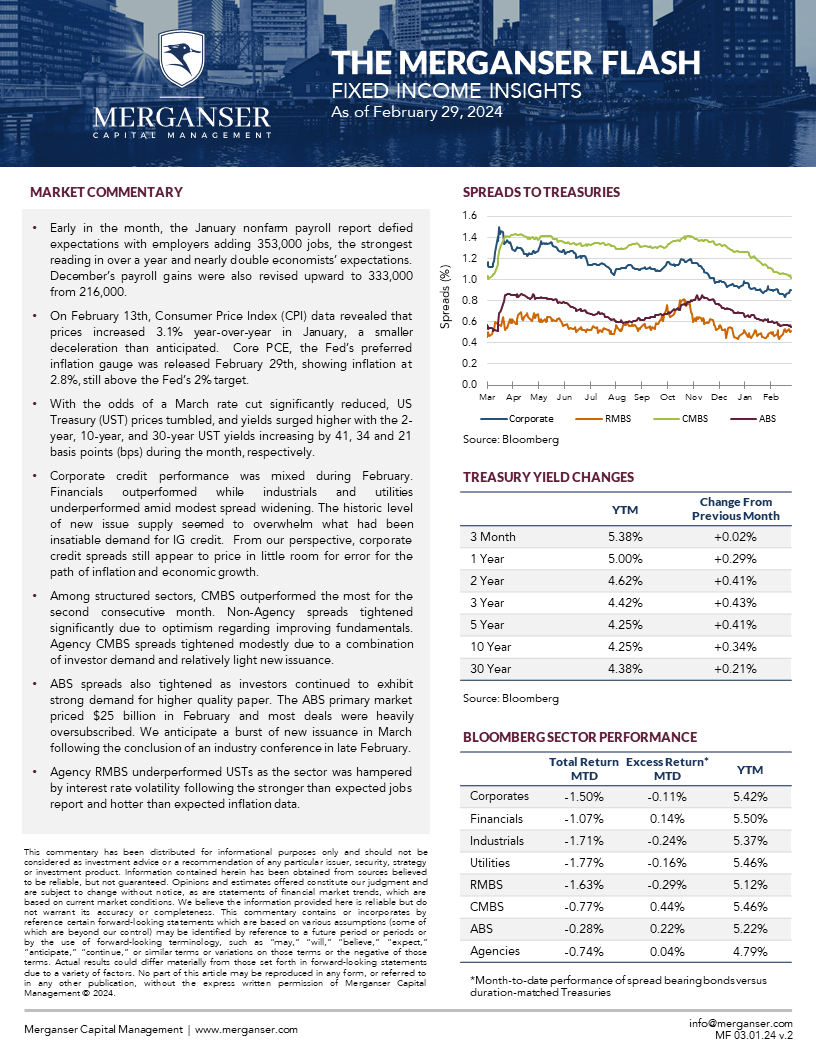- The Federal Reserve (Fed) held their target rate steady for the fifth consecutive meeting in March. With the economy expected to continue growing at a solid pace, Fed officials once again signaled three 25 basis point (bp) rate cuts this year. Notably, their projections included higher growth, higher Core PCE, and a higher long run terminal rate of 2.6%. Futures markets are currently pricing in an approximately 60% chance of a cut in June.
- US Treasury (UST) yield changes were relatively muted in March, with the 2-Year ending the month unchanged and the 10-Year and 30-Year decreasing by 5 bps and 4 bps, respectively. Sentiment in Investment Grade fixed income markets was generally risk-on, with risk-bearing securities outperforming USTs.
- Corporate credit outperformed USTs, with spreads continuing to tighten despite a record amount of issuance year-to-date. One possible factor driving the voracious demand for IG paper may be cash investors “coming off the sidelines”. Among corporate credit subsectors, industrials outperformed the most, followed by utilities and financials. Within industrials, several names rebounded substantially from weakness due to fundamental concerns in February. From our perspective, corporate credit spreads are pricing in little room for error for the path of inflation and economic growth.
- Among structured sectors, CMBS outperformed the most. Spreads for both Agency and Non-Agency paper tightened. Strong economic growth, low new issue supply, hopes for lower interest rates, and declining rate volatility all drove spreads tighter. Market participants also expressed optimism that property prices have hit their “bottom”.
- Agency RMBS also meaningfully outperformed USTs. Agency mortgages enjoyed muted interest rate volatility, with the ICE BAML MOVE Index dropping to the lowest level since the beginning of the Fed tightening cycle. Robust supply was met by strong demand, pulling spreads tighter.
- ABS modestly outperformed USTs during March. Spreads for AAA-rated senior paper were generally flat to slightly tighter. The more esoteric ABS subsectors performed better, reflecting strong investor demand for paper outside of the traditional auto loan and credit card segments.


